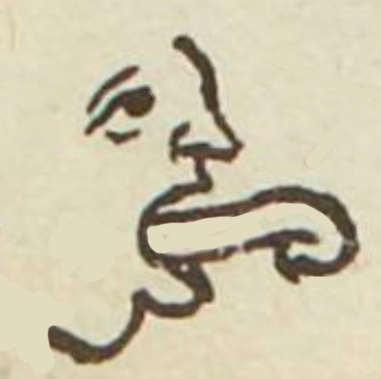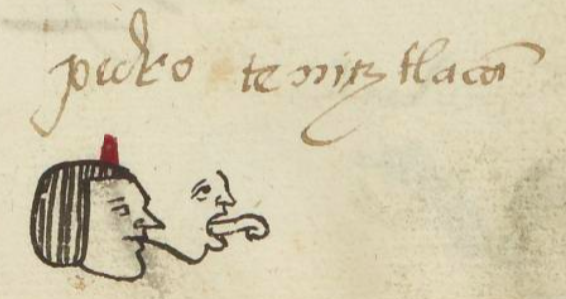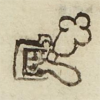Teniztlaca (MH810r)
This black-line drawing of the simplex glyph for the personal name Tenitztlaca (perhaps "Black Tern-Person") is attested here as a man’s name. The glyph shows the face of a person (tlacatl) in profile, looking toward the viewer’s right. It has a large, protruding tongue that curls under at the tip. The bird known as the Black Tern has a very unusual bill and “two tongues,” according to avian scholar Eugene Hunn. So, perhaps this is the reason for the curling tongue. The gloss is a little unclear, but it seems to start with Tenitz-. It could also start with Temiz-, which would be a reference to a wild cat. Either way, there seems to be a reference here to a hybrid person-animal. Further investigation is required.
Stephanie Wood
Note, below, how various types of wild cats, such as the jaguar (as ocelotl or tecuani) can sometimes be drawn with large protruding tongues. In fact, many animals have protruding tongues–serpents almost always have bifurcated protruding tongues–but wildcats seem especially notable for the large thick tongues.
Stephanie Wood
1560
Jeff Haskett-Wood
gato montés, charrán negro, lenguas, voluta, espiral, nombres de hombres

tenitz(tli), a type of bird, black tern, https://nahuatl.wired-humanities.org/content/tenitztli
temiz(tli), a wild cat, https://nahuatl.wired-humanities.org/content/temiztli
tlaca(tl), a person or a lord, https://nahuatl.wired-humanities.org/content/tlacatl
posiblemente Charrán Negro
Stephanie Wood
Matrícula de Huexotzinco, folio 810r, World Digital Library, https://www.loc.gov/resource/gdcwdl.wdl_15282/?sp=694&st=image.
This manuscript is hosted by the Library of Congress and the World Digital Library; used here with the Creative Commons, “Attribution-NonCommercial-ShareAlike 3.0 License” (CC-BY-NC-SAq 3.0).








